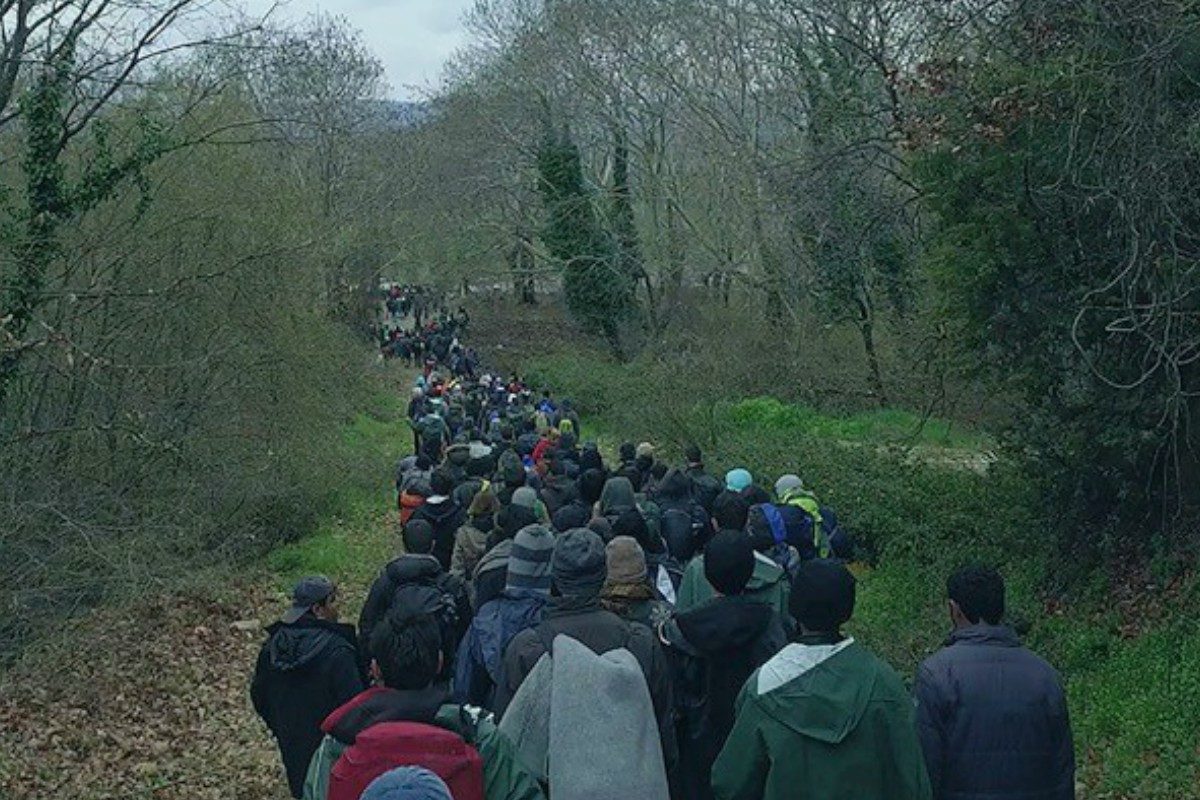
Artist Ai Weiwei is known to resist injustice and inequality through his various art forms and activism. In his newest film that just premiered at the Venice Film Festival, Human Flow, he does just that. Following, interacting, and interviewing the refugees from various locations from all over the world, Ai documents the turmoil that refugees face – either the living conditions near border wall camps and the emotional and psychological effects of leaving home because of a war.
When watching the film, there is so much to take in. Ai’s artistic eye is well executed in his b-rolls full of artistic angles and creative use of light. Although, what is most important is the message – that some refugees are not being treated with humanity. They are being blocked by politics and border walls.
The film stated that since the Berlin Wall was torn down, the number of border walls has increased. Historically, border walls are only a recent trend with increasing migration. According to the Migration Policy Institute, after WWI, there were fewer than five border walls. When the Berlin Wall fell in 1989, there were 15. Currently, there are nearly 70 border walls.
Ai does not shy away from the numbers and politics of the refugee crisis because they are also telling to the situation. According to the UN Refugee Agency, 65 million people are displaced in the world. Ai does not just spit facts and headlines at you, he also shows them as they happen, with the headlines traveling across the bottom of the screen, similar to the passing headlines on a televised news channel.
In a world of seeking refugee, Ai shows there are still fleeting moments that refugees are happy. They smile, they sing, they dance, they laugh. There are moments when the audience laughs too. One scene shows a Pakistani woman siting in Athens with a young girl and older woman. Ai tells them that the border is closed and the woman questions what to do next. Her daughter has a tube balloon hat on that she deliberately pokes her mother with while giggling. Her mother persists that she stops before all three of them are laughing too. Then there is another the scene when a woman shows Ai pictures of her life in Syria, including a picture of her cat in a onesie.
“As an artist, I always believe in humanity and I see this crisis as my crisis. I see those people coming down to the boats as my family. They could be my children, could be my parents, could be my brothers. I don’t see myself as any different from them. We may speak totally different languages and have totally different belief systems but I understand them. Like me, they are also afraid of the cold and don’t like standing in the rain or being hungry. Like me, they need a sense of security.”
-Ai Weiwei, Director and Producer of Human Flow
Ai is shown in the film as well, even filming with his iPhone, but he is also interacting with the refugees: He is asking them questions, dancing with them, and consoling them.
Ai shot in Afghanistan, Greece, France, Germany, Lebanon, Jordan, Mexico, and other countries that are currently involved in the refugee crisis. From the ships crossing the Mediterranean, the natives who finally decide to leave war-zones, and those waiting for borders to open – you see it all in its rawest form.


